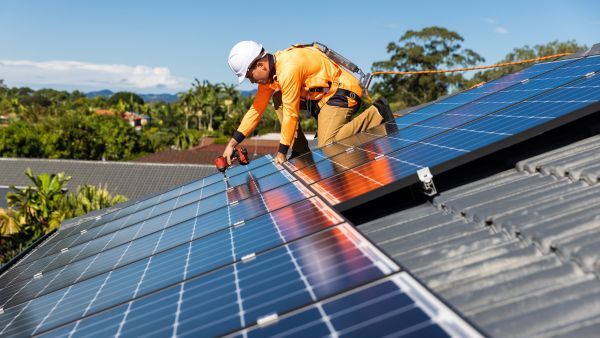In simple terms, a standard photovoltaic system consists of the following main components:
1. Solar panels (or photovoltaic modules)
These are the most visible components of a photovoltaic system. They convert sunlight into electricity using the photovoltaic effect. The panels are made up of photovoltaic cells, generally made of silicon, which generate direct current (DC) when exposed to light.
2. Inverters
The inverter is a key device that converts the direct current (DC) produced by the solar panels into alternating current (AC), the type of current used by household appliances and the electricity grid. This conversion is necessary because the electricity produced by the panels cannot be used directly by most household appliances or fed directly into the grid.
3. Cables and connectors
These provide the electrical connection between the solar panels, the inverter and the building's electrical system or the grid. Cables must be correctly sized to minimise energy losses.
4. The monitoring and management system
Although not essential, modern installations include a monitoring system to track energy production, detect any problems and optimally manage energy consumption.
5. The bi-directional meter (for grid-connected installations)
This special meter measures the electricity you feed into the grid and the electricity you consume, enabling accurate billing, especially where self-consumption is practised with sale of the surplus.
6. Electrical protection devices
We've mentioned these components last, but they are at the heart of all installations, whether small and local or industrial. These protective devices are designed to prevent the risk of fire and damage to equipment, and to ensure the safety of people when using and maintaining the system.
Below are details of the electrical protection elements, their positioning between the installation components and the elements required for maintenance work:
Circuit breakers and fuses
- Role: they protect against overcurrents that may be caused by a short-circuit or an overload. They automatically interrupt the circuit in the event of a problem, protecting the wiring and equipment.
- Placement: between the solar panels and the inverter (to protect the panels' wiring and the inverter's DC input) and between the inverter and the electrical grid/distribution board (to protect the AC circuit against overcurrents).
Surge protectors
- Role: they protect against transient overvoltages, often caused by lightning, which can damage electrical equipment.
- Location: at the AC input to the building (to protect the building's electrical installation) and near the inverter (on the DC and AC sides to protect both the DC circuits coming from the solar panels and the AC circuit connected to the grid).
DC load break switches (DC isolators)
- Role: they are used to electrically isolate the solar panels from the inverter for safe operations. They are useful during maintenance or in an emergency.
- Positioning: close to the solar panels (to break the DC circuit upstream of the inverter).
Read this article to find out how to choose a DC disconnect switch for your photovoltaic installations.
Differential switches
- Role: they detect differences in current that could indicate an electrical leak (earth fault current) and automatically cut the circuit to prevent the risk of electrocution.
- Position: on the AC circuit, after the inverter, before connection to the building's switchboard, to protect people against insulation faults.







